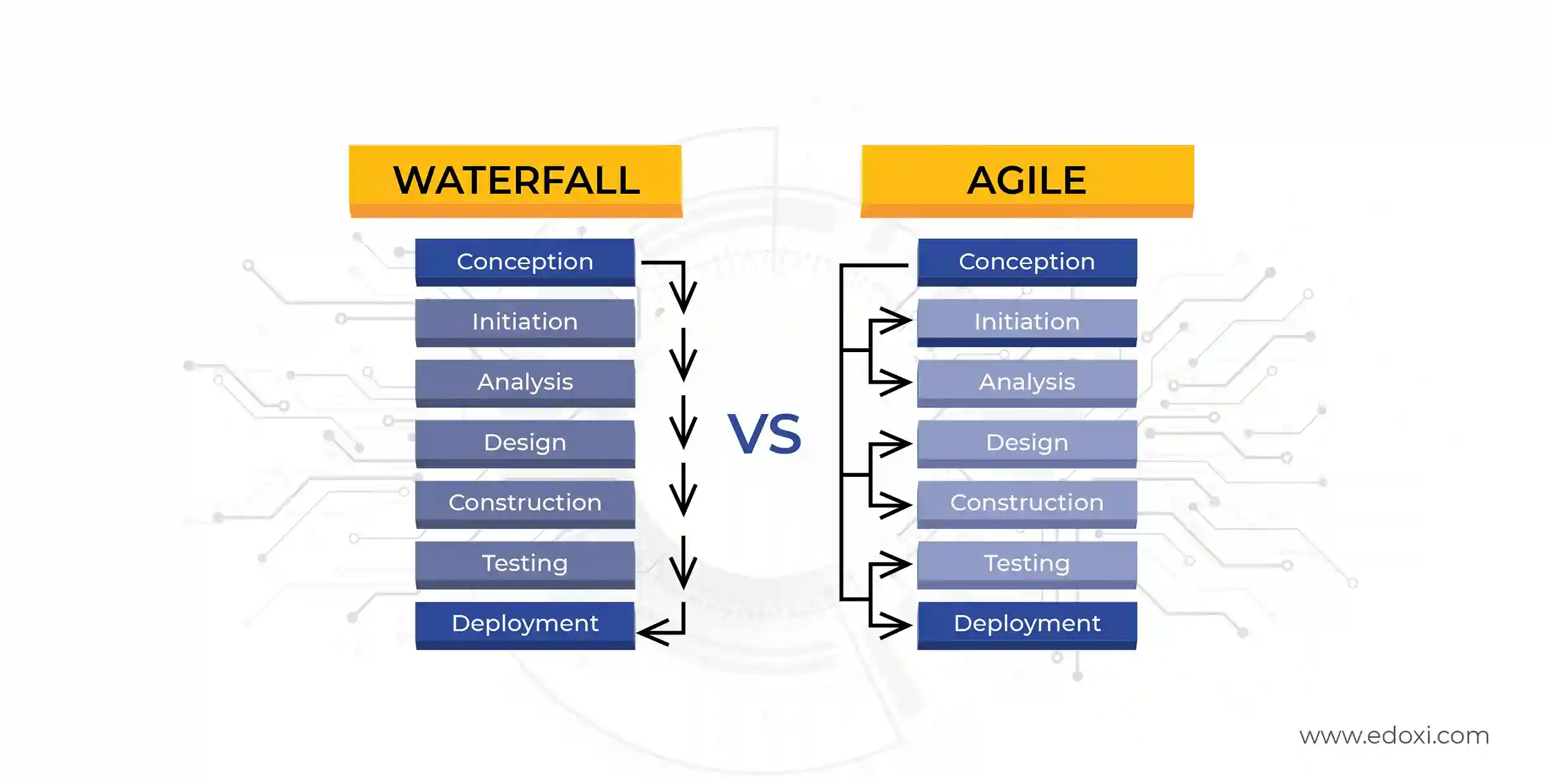 Muhamad Thasveer Arafath
Jun 16, 2025
Muhamad Thasveer Arafath
Jun 16, 2025
1.webp)
Agile and Waterfall are popular project methodologies used by project managers worldwide. In project management, choosing the right approach is crucial for the successful delivery of projects. Agile and Waterfall approaches have contrasting philosophies and differ based on how projects are planned, executed, and delivered.
You should consider the factors mentioned below to determine whether Agile or Waterfall methodology is right for your project:
Let’s evaluate the strengths and weaknesses of Agile and Waterfall methodologies and gain insight to select the best approach for project management.
Let’s explore the key features of Agile and the Waterfall approach, starting with the Waterfall approach.

The Waterfall methodology is a well-established project management workflow. It is a traditional project management approach characterized by a linear and sequential design process. The Waterfall model was initially proposed by Winston Royce in 1970 in his research paper on software development. Check out the key features of the Waterfall methodology.
The pros and cons of the Waterfall approach for project management are given in the table below.
|
Pros |
Cons |
|
The stages in the project are clearly defined in the Waterfall Approach. This provides clarity and structure to the milestones of the project. |
There is less flexibility in the waterfall approach. It is difficult to accommodate changes in the project once a phase is completed. |
|
It is easier to estimate the cost and time of the project in the Waterfall model. This makes it easy to plan the budget and timeline for the project. |
Since there is less customer involvement in this approach, the result may not meet the client’s expectations. |
|
As there is less cross-functional work. It is easy to track the progress of the project. |
Due to the rigid step-by-step process, it can take a longer time for the final delivery of the project. |
When to Choose the Waterfall Approach?Choose the Waterfall Approach when,
|
The Agile methodology is a modern project management approach that breaks down projects into phases known as sprints. The Agile methodology emerged in response to the limitations of traditional project management methods, particularly in software development. It promotes iterative development, collaboration, and flexibility.
The Agile Model appeared for the first time in the manifesto of Agile Software Development in 2001. Agile Software has emerged as a popular choice in Project Management. According to Coherent Market Insights, the market size of Agile Project Management software is expected to reach USD 9.28 billion by 2030. Let’s learn more about the Agile approach.
Agile Methodology is based on 12 principles. The following are the 12 principles of Agile Methodology.
Check out the pros and cons of the Agile approach.
|
Pros |
Cons |
|
Agile accommodates changes even in the last stage of development. |
In the Agile approach, it is difficult to estimate time, cost, and resources accurately at the start of the project. |
|
Agile incorporates customer feedback at every stage of development, enhancing customer satisfaction. |
The agile approach requires Active Stakeholder Involvement. This approach is not suitable if the client is unavailable for regular input. |
|
The iterative approach of the Agile model helps in identifying and resolving issues at the early stages of the project. |
Comprehensive documentation is not followed in the Agile approach. This can be problematic for future reference of projects. |
When to Choose the Agile Approach?Choose the Agile Approach when,
|
A comparative analysis between Agile and Waterfall models is given in the table below!
|
Aspect |
Waterfall Model |
Agile Model |
|
Process Structure |
Sequential and rigid |
Iterative and flexible |
|
Requirements |
Fixed at the beginning |
Evolve throughout the project |
|
Customer Involvement |
Minimal during development |
Continuous and active involvement is required |
|
Delivery |
End of the project |
Frequent deliveries after each phase (sprint) |
|
Change Management |
Difficult and costly |
Easily manageable |
|
Testing |
After development |
Ongoing throughout the project |
Agile and Waterfall each offer distinct advantages and are suited to different types of projects. While Waterfall provides a structured and predictable environment ideal for stable requirements, Agile fosters innovation and responsiveness in dynamic scenarios. In modern project environments, many organizations adopt a hybrid approach, blending the discipline of Waterfall with the flexibility of Agile.
If you want to master the Agile approach, you can start by enrolling in the PMI-ACP Certification course. Joining this course will help you boost your knowledge of the Agile model and enhance your project management skills. GOOD LUCK!

Project Management Consultant and Trainer
Muhamad Thasveer Arafath is an engineer with a post-graduation MBA who possesses 20+ years of industry work experience in Project Management. To name a few of his area expertise, he has worked in various multi-million construction/development projects and programs in the UAE concerning project planning, project controls, project advisory/valuations, as a project lead, etc.
Muhamad is currently a project management consultant and trainer specializing in Project Management Institute (PMI) certifications. He has now completed training for 65+ batches for various PMI certifications, holding an excellent passing rate among his training participants.
He holds eight certifications from PMI and is an Award winner from the PMI UAE Chapter in 2019/2020 for being the member with the highest number of PMI certifications in UAE. He is certified from PMI in PfMP, PgMP, PMP, RMP, SP, SP, PBA and CAPM. He is also a Fellow of the Indian Institute of Valuers (FIIV).